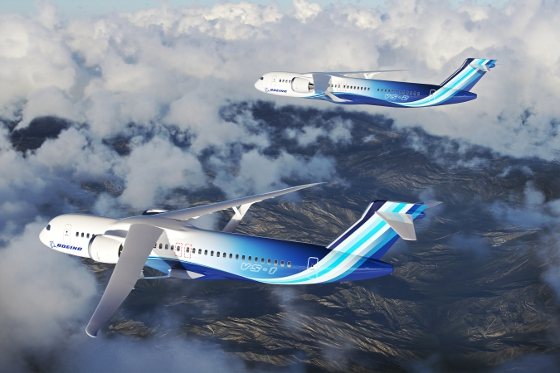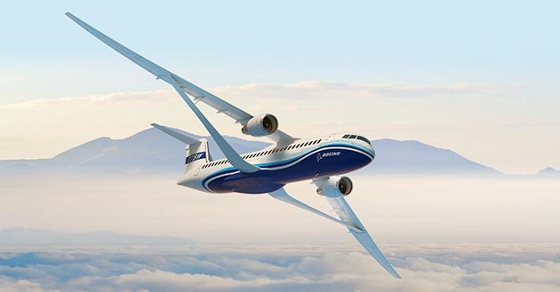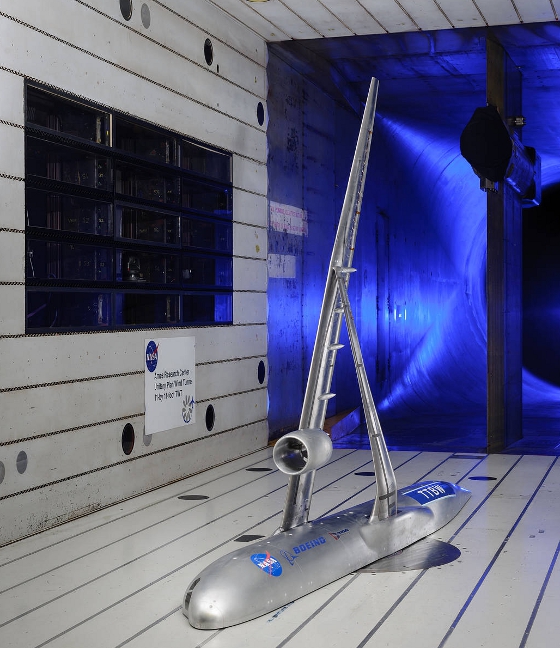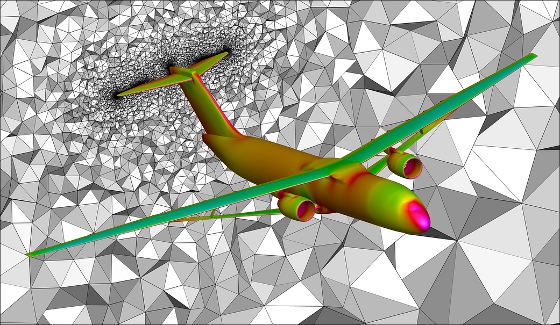 |
| February 07, 2023 | Volume 19 Issue 05 |
Designfax weekly eMagazine
Archives
Partners
Manufacturing Center
Product Spotlight
Modern Applications News
Metalworking Ideas For
Today's Job Shops
Tooling and Production
Strategies for large
metalworking plants
Boeing to build braced-wing plane demonstrator for NASA

Boeing will lead the development and flight testing of a full-scale Transonic Truss-Braced Wing (TTBW) demonstrator airplane. [Credit: Boeing]
NASA has selected Boeing and its industry team to lead the development and flight testing of a full-scale Transonic Truss-Braced Wing (TTBW) demonstrator airplane. The technologies demonstrated and tested as part of the Sustainable Flight Demonstrator (SFD) program will inform future designs and could lead to breakthrough aerodynamics and fuel efficiency gains.
When combined with expected advancements in propulsion systems, materials, and systems architecture, a single-aisle airplane with a TTBW configuration is predicted to reduce fuel consumption and emissions up to 30% relative to today's most efficient single-aisle airplanes, depending on the mission. The TTBW design is not considered optimal for larger aircraft.

Boeing has been studying the Transonic Truss-Braced Wing concept through a collaboration with NASA as part of the Subsonic Ultra Green Aircraft Research (SUGAR) program. [Credit: Boeing Creative Services illustration]
The SFD program aims to advance the civil aviation industry's commitment to reaching net zero carbon emissions by 2050, as well as the goals set forth in the White House's U.S. Aviation Climate Action Plan. The project "represents an opportunity to design, build, and fly a full-scale experimental plane, while solving novel technical problems," said Greg Hyslop, Boeing chief engineer and executive vice president of Engineering, Test & Technology.
NASA's funding through the SFD Space Act Agreement totals $425 million. The SFD program will also leverage up to $725 million in funding by Boeing and its industry partners to shape the demonstrator program and meet the resource needs required. Separately, Boeing's previous internal investments for recent phases of sustainable aviation research total $110 million.

A model of the TTBW aircraft is seen here installed for testing in the Unitary Plan Wind Tunnel at NASA's Ames Research Center in California. A model representing just half the airplane, sliced from nose to tail, is used so the tunnel can fit a larger-scale model holding hundreds of sensors to record data during the test. At about 11 ft long and 7.5 ft from floor to wing tip, this model is 9% of the size of the full-scale aircraft. [Credits: NASA/Dominic Hart]
According to Boeing, "Ultrathin wings braced by struts with larger spans and higher-aspect ratios could eventually accommodate advanced propulsion systems that are limited by a lack of underwing space in today's low-wing airplane configurations. For the demonstrator vehicle, Boeing will use elements from existing vehicles and integrate them with all-new components."
The TTBW airframe concept is the result of more than a decade of development supported by NASA, Boeing, and industry investments. Under previous NASA programs, including the agency's Subsonic Ultra Green Aircraft Research (SUGAR) program, Boeing conducted extensive wind tunnel testing and digital modeling to advance the design of the TTBW. Early conceptual studies started under NASA's Environmentally Responsible Aviation program.
An updated Boeing design released in 2019 showed an optimized truss and a modified wing sweep -- a configuration that boasted unprecedented aerodynamic efficiency while flying at Mach 0.80, which is consistent with the speed of many of today's jetliners. By adjusting the wing sweep angle, the truss can carry lift more efficiently. The end result was a more integrated design that significantly improved vehicle performance. This iteration also included folding wings -- a feature that has not been confirmed as final. From end to end, the wings measure 170 ft. The high wingspan is made possible by the presence of a truss, which supports the extended length of the ultra-thin wing.

This digital rendering of the TTBW concept was created using data from a 2021 simulation using computational fluid dynamics. It shows the concept aircraft's aerodynamic properties. The red and violet colors show areas of higher drag, and the green and blue show areas of lower drag. The triangular, pyramid-looking "cells" represent airflow around the aircraft, helping scientists understand the vehicle's aerodynamics and improve its efficiency. [Image Credit: NASA/Craig Hunter; Text Credit: John Gould/Aeronautics Research Mission Directorate]
Mike Sinnett, vice president and general manager for product development at Boeing Commercial Airplanes, told Aviation Week in a recent article, "The TTBW's span is about 50% longer than the cantilever wing on an equivalent conventional single-aisle airliner."
According to Boeing, the high wing also allows easier, more efficient integration of large-diameter fans and open rotor propulsion systems for additional fuel-burn benefits.
Boeing's chief executive David Calhoun told Flight Global the TTBW's design "will likely involve use of higher-bypass-ratio turbofans. Such engines would be wider in diameter than today's turbofans but could possibly be accommodated by the truss-braced design's high-mounted wings."
NASA is aiming for the demonstrator's first flight to take place in about five years.
Sources: NASA, Boeing, Aviation Week, Flight Global
Published February 2023
Rate this article
View our terms of use and privacy policy
